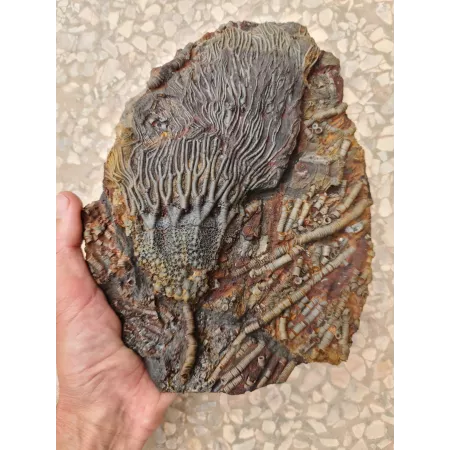Crinoid - Explore the Ancient Evolutionary History of Crinoids

Welcome to the World of Fossil Crinoids
Crinoid
Structure and Appearance: Fossil crinoids come in various forms, but many have a plant-like appearance. They consist of a calcareous stem or "column" attached to the seafloor, from which radiate branched arms. These arms were used to capture food particles from the water.
Size: Fossil crinoids could vary greatly in size, ranging from a few centimeters to several meters in length for some species.
Location: Crinoids were abundant in ancient seas, primarily inhabiting shallow waters. Their fossilized remains are often found in sedimentary rocks formed from marine deposits.
Composition: The most commonly fossilized parts of crinoids are their calcareous ossicles, which formed the stem and arms. These structures are often well-preserved in fossiliferous rocks.
Lifestyle: Crinoids were typically sessile organisms, attached to the seafloor by their column. Some were mobile during their juvenile stage, but many adult crinoids remained fixed in one spot throughout their lives.
Evolution: Crinoids have a long evolutionary history, showcasing their unique adaptations and survival strategies in prehistoric oceans.
